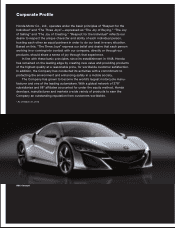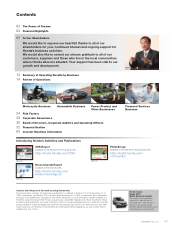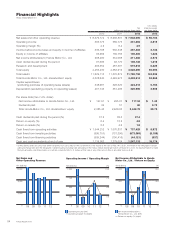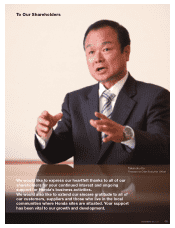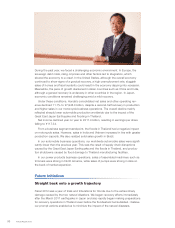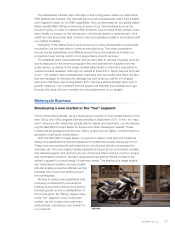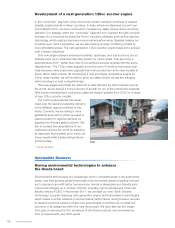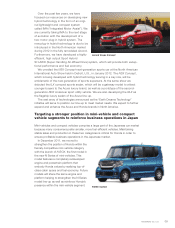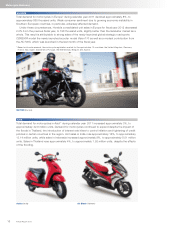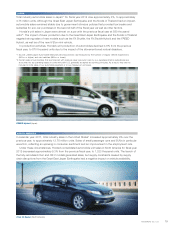Honda 2012 Annual Report Download - page 12
Download and view the complete annual report
Please find page 12 of the 2012 Honda annual report below. You can navigate through the pages in the report by either clicking on the pages listed below, or by using the keyword search tool below to find specific information within the annual report.
In the development of the N Series, Honda has embraced a different approach to
designing and manufacturing automobiles. First, we have concentrated all of the devel-
opment, procurement, production and sales functions for the mini-vehicles business at
the Suzuka Factory. This new approach aims to accelerate the development process
while also reducing costs so that we can sell vehicles at more affordable prices.
Second, the technical improvements that we achieve in development and production
processes in Japan will benefit the subsequent development of small models for the
global market as interest in smaller vehicles is rising among consumers worldwide. By
honing our skills in the mini-vehicle sector and transcending divisional boundaries, we
aim to open up new possibilities for our automobile operations in Japan, while also
strengthening Honda’s global business.
Power Product and Other Businesses
Developing and popularizing energy-generating products
Cumulative production units of Honda general-purpose power products surpassed 100
million units*2 during 2011. Honda’s power product business operations began in 1953
with the philosophy “technology for people” and the first products were engines for
agricultural machinery. Since then, we have developed products based on our core
engine technologies that help people get things done in a variety of situations and our
current product line-up ranges from tillers, generators and outboard motors to water
pumps, lawn mowers and snow blowers. The demand for such general-purpose
engines is expected to continue growing in the future, notably in markets across Asia
and Africa where we have established the Honda brand through our motorcycle busi-
ness operations. We aim to further grow our power products business by targeting
developing countries with fast-growing economies. As the needs of customers around
the world continue to diversify, we will seek to supply a broad range of general-utility
products that offer superior environmental and safety performance.
Energy-generating products form a new pillar of growth for our power products
business, and we are actively seeking to develop products and solutions that meet
the needs of society. In May 2011, we started selling a fully remodeled household gas
engine cogeneration unit. This new unit features the EXlink compact high-efficiency
engine, which achieves significantly higher fuel efficiency based on the use of a high
expansion ratio engine capable of compression ratios of up to 1.4 times. In the summer
of 2011, we launched the ecoPOWER 1.0 compact cogeneration system for residential
use, the first such product in Europe. This system was jointly developed with Vaillant,
a company specializing in the manufacture of boilers and heating systems based in
Remscheid, Germany. It won the award for “Germany’s Most Sustainable Products/
Services” at the German Sustainability Award for 2011. The economical and environ-
mental performance of ecoPOWER 1.0, which simultaneously supplies heat and
electricity, was highly praised by the judges.
We are also continuing to research and develop the Honda Smart Home System
(HSHS), which seeks to integrate the household gas engine cogeneration unit with per-
sonal mobility solutions and various energy-efficient technologies. By controlling heat
and electricity within the home for optimal energy efficiency, the HSHS system is an
original Honda solution that aims to help minimize CO2 emissions. We will continue to
do research in this area to provide products which epitomize the Honda spirit.
*2 Honda figure (excludes solar cells): total output based on number of engines produced
Annual Report 201210


